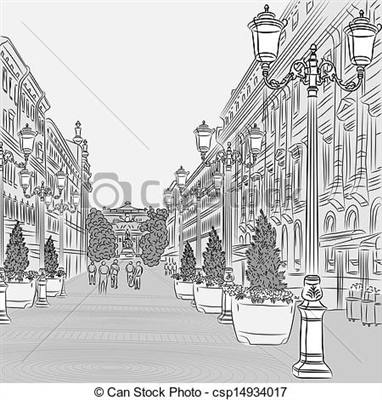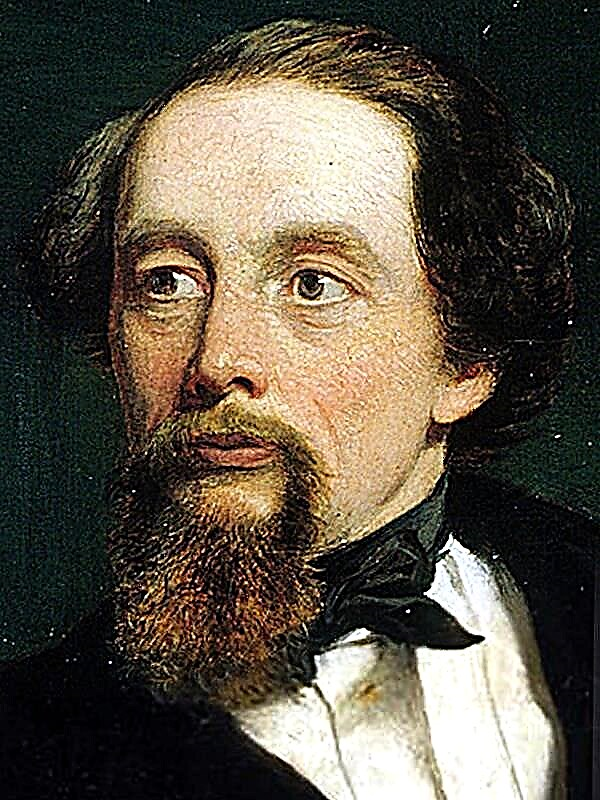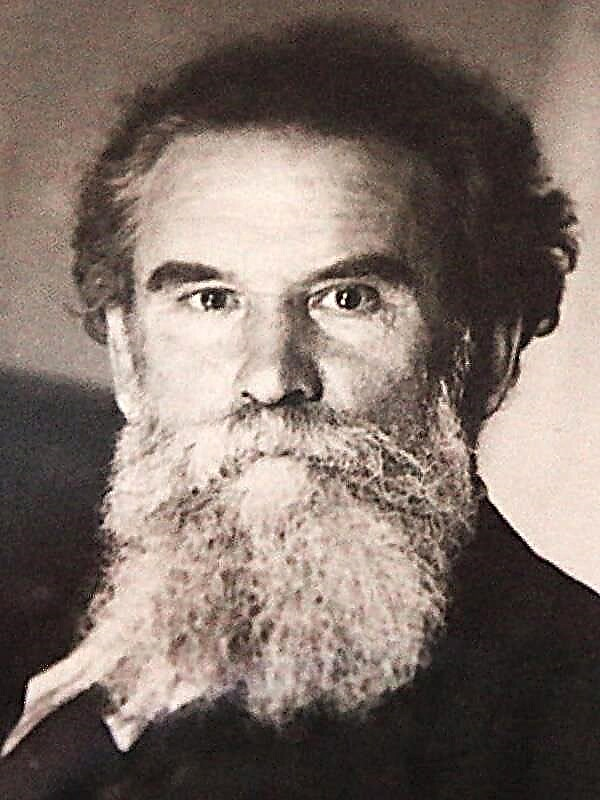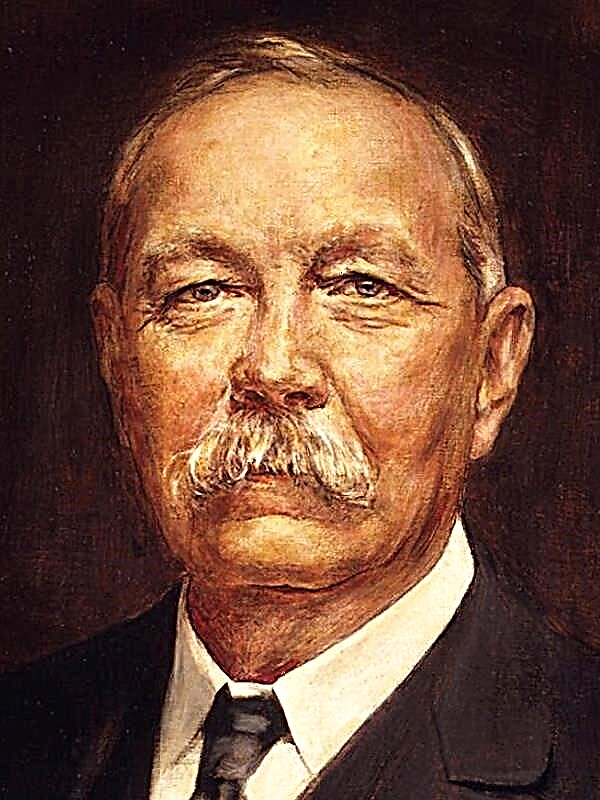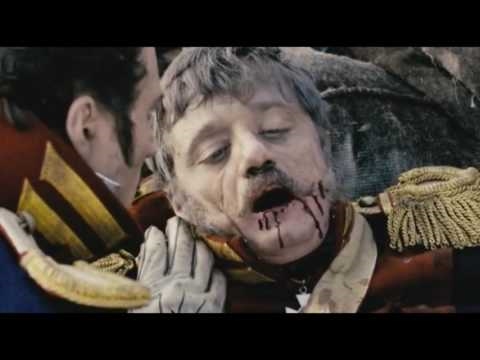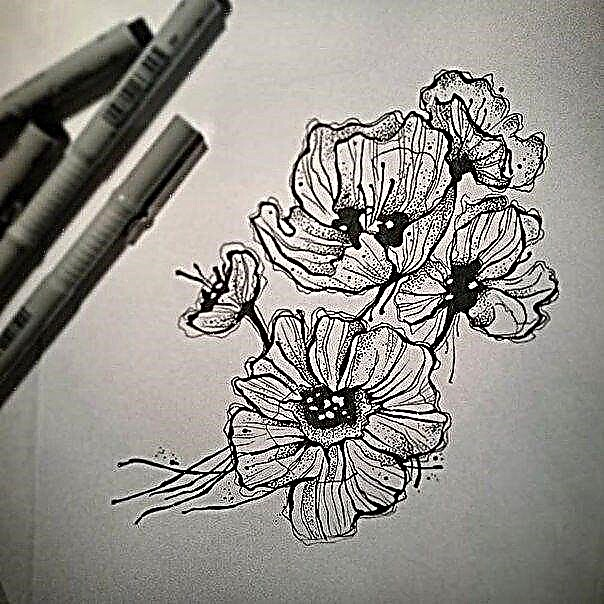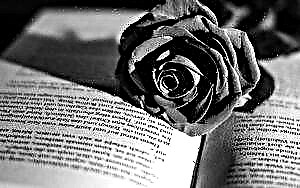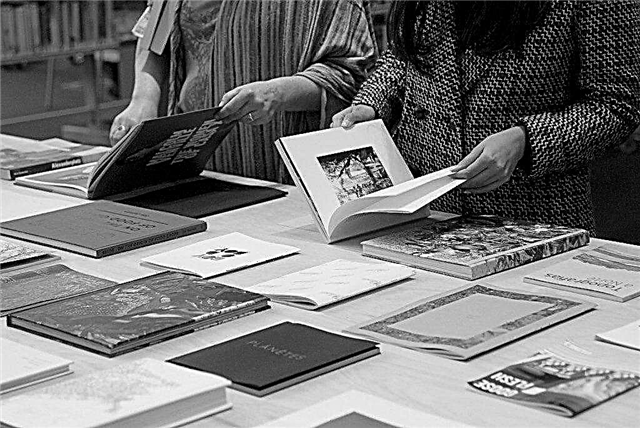“Sebastian Knight was born on the thirty-first of December 1899 in the former capital of my fatherland” - this is the first phrase of the book. Pronounced by her half younger brother Knight, indicated in the novel by the letter “V.” Sebastian Knight, a famous writer, a native of Russia, who wrote in English, died in January 1936 in a hospital in the Paris suburb of Saint-Damier. V. restores the brother’s genuine life, collecting it in pieces, - so in the eyes of the reader, this intricate and complicated (at first glance) novel is created.
V. and Sebastian have a common father, an officer of the Russian guard. In his first marriage, he was married to the jabby, restless Englishwoman Virginia Knight. Having fallen in love (or having decided that she was in love), she left her husband with a four-year-old son in her arms. In 1905, his father married again, and soon V. was born. The six-year age difference for children is especially significant, and in the eyes of his younger brother the elder seemed to be adored and mysterious.
Virginia died of a heart attack in 1909. Four years later, father, it’s ridiculous to say, started a duel because of her, Sebastian was hard and in his work resorted to a parody, “as a kind of throwing board that allows you to fly into higher spheres of serious emotions ".
In the office of Goodman, V. accidentally meets Helen Pratt: she is friends with Sebastian's lover Claire Bishop. The story of this love is built from the paintings that V. imagined after comparing the stories of Pratt with the stories of another friend of Sebastian (poet P.J. Sheldon). In addition, V. accidentally saw a married and pregnant Claire on a London street, she was destined to die from bleeding. It turns out that their relationship lasted about six years (1924-1930). During this time, Sebastian wrote the first two novels (Prismatic Facet [1] and Success, the fate of which corresponded to his name) and three stories (they will be published in the book The Amusing Mountain in 1932). Claire was an ideal friend for a young writer - smart, sensitive, with imagination. She learned to type and helped him in everything. They also had a small black bulldog ... In 1929, on the advice of a doctor, Sebastian left to heal his heart at a resort in Blauberg (Alsace). There he fell in love, and on this their relationship with Claire ended.
In Sebastian’s most autobiographical book, “Lost Things,” which he started at the time, there is a letter that can be read as an appeal to Claire: “It always seems to me that there is some secret flaw in love ... I have not stopped loving you but because I can’t, as before, kiss your sweet gloomy face, we need to leave ... I will never forget you and cannot replace anyone ... I was happy with you, now I am unhappy with the other .. . ”Throughout almost the entire second half of the novel, V. is busy searching for this other woman, - it seems to him that, having seen her and talking to her, he learns something important about Sebastian. Who is she? It is known that in London, Sebastian received letters written in Russian from a woman whom he met in Blauberg. But, fulfilling his brother’s posthumous will, V. burned all his papers.
V.’s trip to Blauberg gives nothing, but on the way back he meets a strange little man (it seems he came straight from Sebastian’s story “The Wrong Side of the Moon”, where he helped unlucky travelers), the Little Man gets for V. a list of guests at the Beaumont Hotel in Blauberg for June 1929, and he notes four female names - each of them could belong to a beloved brother. sent to addresses.
Frau Helen Gerstein, an elegant, gentle Jewess living in Berlin, has never heard of Sebastian Knight. But in her house V. gets to know Sebastian’s classmate (“how to say this ... your brother wasn’t very much welcomed at school ...”); classmate is the elder brother of Sebastian's first love - Natasha Rozanova.
In the house of Madame de River in Paris V. Pal Palych River and his cousin Black (an amazing person who knows how to play the violin while standing on his head, sign upside down, etc.). It turns out that Nina Rechnaya is the first wife of Pal Palych, with whom he has long been separated. Apparently, this person is eccentric, unbalanced and prone to adventures. Doubting that a woman of this type could captivate Sebastian, V. goes to the fashionable quarter of Paris - another “suspect,” Helen von Graun, lives there. He is met by Madame Lezerf (“a small, fragile, pale-faced lady with smooth dark hair”), who called herself a friend of von Graun. She promises V. to find out everything that is possible. (To clear his conscience, V. also visits a certain Lydia of Bohemia, who, alas, turned out to be middle-aged, fat, and vulgar.)
The next day, Madame Lecerf (an old black bulldog was lounging on her sofa) tells V. how her friend charmed Sebastian: firstly, she liked him, and besides, it seemed funny to make such an intellectual make love to her. When he finally realized that he could not live without her, she realized that she could no longer endure his talk (“about the shape of an ashtray” or “about the color of time”, for example), and abandoned him. Hearing all this, V. even more wants to meet with von Graun, and Madame Leserf invites him to a weekend in her village, promising that the mysterious lady will certainly come there.
In a huge, old, desolate house, there are some people who are in a complicated way connected with each other (just like in Prismatic Fatset, where Sebastian parodyed a detective). Reflecting on a mysterious stranger, V. suddenly feels attracted to Madame Leserf. As if in response she reports how she once kissed a man only because he knew how to sign upside down ... recalls his cousin Black and understands everything! In order to verify his guess, he quietly in Russian says behind Madame Lezerf's back: “And she has a spider on her neck”, - and the imaginary Frenchwoman, but in fact - Nina Rechnaya, immediately grabs her neck by the hand. V. is leaving without any explanation. In Sebastian’s latest book, The Obscure Asphodel [2], the characters appear on the scene and disappear, and the main character dies throughout the whole story. This theme now agrees with the theme of the book “The Real Life of Sebastian Knight,” which V. is almost adding to our eyes (it is not by chance that this is probably my favorite of all his brother’s books). But he recalls how in the middle of January 1936 he received an alarming letter from his brother, written, oddly enough, in Russian (Sebastian preferred to write letters in English, but he started this letter as a letter to Nina). At night V. saw an unusually unpleasant dream - Sebastian calls him “the last, persistent call,” only words cannot be made out. The next day, a telegram arrived: “Sebastian’s condition is hopeless ...” With great troubles V. got to Saint-Damier. He sits in the sleeping brother’s room, listens to his breathing and realizes that at this moment he will recognize Sebastian more than ever. However, an error occurred: V. got into the wrong ward and spent the night at the bed of a stranger. And Sebastian died the day before his arrival.
But "any soul can become yours if you catch its twists and follow them." The cryptic words at the end of the novel: “I am Sebastian Knight or Sebastian Knight is me, or maybe we are both someone else that neither of us knows,” can be interpreted as saying that both brothers these are different hypostases of the true author of The Genuine Life of Sebastian Knight, that is, Vladimir Nabokov. Or maybe it's better to leave them unsolved.

